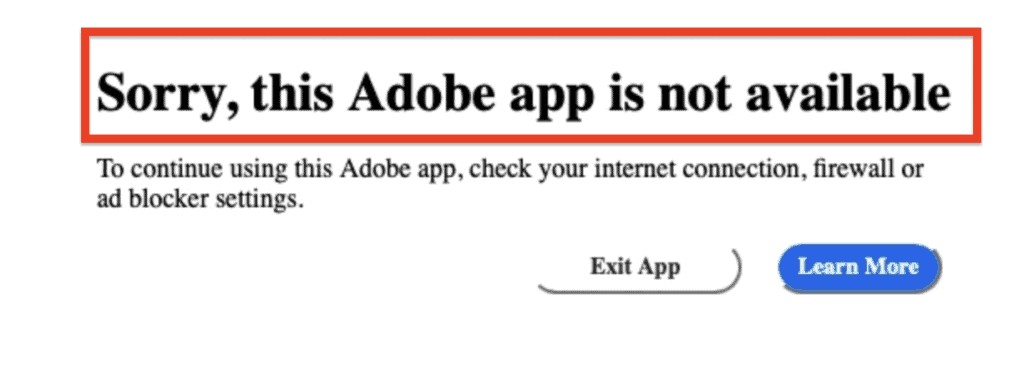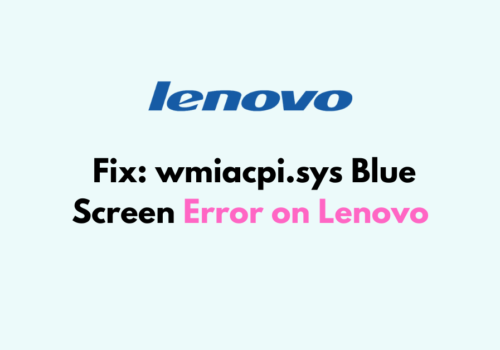Are you getting error message “Sorry, this Adobe app is not available, To continue using this Adobe app, check your internet connection, firewall or ad blocker settings.“?
If so, you’re not alone. Many Adobe users have faced this issue,
It’s essential to have an uninterrupted workflow when working on creative projects, and Adobe software is an indispensable tool for most designers and photographers.
But what happens when Adobe apps refuse to work due to an internet connection issue?
In this article, we will discuss the common error message, “Sorry, this Adobe app is not available, To continue using this Adobe app, check your internet connection, firewall, or ad blocker settings,” and provide a step-by-step guide on how to fix it.
How To Fix “Sorry This Adobe App Is Not Available” Error
To Fix “Sorry This Adobe App Is Not Available” Error, Add Adobe Block IP Addresses List to the Hosts File and flush the DNS cache.

Step 1: Close All Adobe Programs
Before you start the fix, make sure all your Adobe programs are closed. This step is essential to ensure that the changes you make in the following steps take effect.
Step 2: Open Terminal
Press Command + Spacebar to open Spotlight search, type “Terminal,” and hit Enter. Terminal is a command-line interface for Mac users that allows you to execute commands to manage your computer’s settings.
Step 3: Edit The Hosts File
In the Terminal window, type “sudo nano /etc/hosts” and hit Enter. This command opens the hosts file, which is a plain text file used by your computer’s operating system to map hostnames to IP addresses.
You’ll be prompted to enter your password. Type your password and hit Enter. When typing your password, you won’t see any characters appear on the screen, but your input will be registered.
Step 4: Add Adobe Block List To The Hosts File
Once you’ve opened the hosts file, scroll down to the bottom of the document, and paste all the addresses listed in the “BLOCK ADOBE” section of this post. In addition to those addresses, add the following addresses:
- 127.0.0.1 lcs-robs.adobe.io
- 127.0.0.1 9ngulmtgqi.adobe.io
- 127.0.0.1 vcorzsld2a.adobe.io
- 127.0.0.1 r5hacgq5w6.adobe.io
These addresses are known to trigger the error message, and blocking them can prevent the app from checking the status of your license.
Note: If above doesn’t fix the error then you can add these addresses also in the list
Step 5: Save And Close The Hosts File
Once you’ve added the addresses, press Control + X to exit the file. You’ll be prompted to save the changes, press Y, and then hit Enter. You’ll then be returned to the main screen of the Terminal.
Step 6: Flush The DNS Cache
In the Terminal, paste the following command:
sudo killall -HUP mDNSResponder && sudo dscacheutil -flushcache
This command flushes your computer’s DNS cache and ensures that the changes you made to the hosts file take effect.
Step 7: Restart Adobe App
Now that you’ve made the necessary changes to your computer’s settings, you can restart your Adobe app. You should no longer receive the “Sorry This Adobe App Is Not Available” Error message, and the app should work correctly.
Additional Tips For Resolving “Sorry This Adobe App Is Not Available” Error
If the hosts file method does not work for you, there are a few additional steps you can take to resolve “Sorry This Adobe App Is Not Available” error:
- Check your internet connection: Ensure that you have a stable and reliable internet connection. Poor internet connectivity can cause connection issues with Adobe’s servers, leading to authentication problems.
- Check your firewall settings: Ensure that your firewall settings are not blocking Adobe’s servers. If your firewall is blocking the servers, you may need to add exceptions to allow Adobe’s servers to connect.
- Check your ad blocker settings: If you are using an ad blocker, ensure that it is not blocking Adobe’s servers. Ad blockers can interfere with the authentication process, leading to connection issues.

